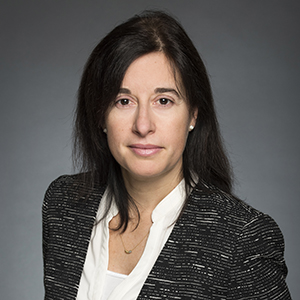Biography
Research interests:
Therapeutic viruses have been gaining momentum both pre-clinically and clinically as promising multi-modality anti-cancer platforms. Several viruses have been successfully engineered to selectively replicate and kill cancer cells, thereby rendering them oncolytic (onco = tumor; lytic = killing). However, a tumour is more than a collection of malignant cells. The tumour microenvironment also contains cancer-associated fibroblast (CAFs), fat cells (cancer-associated adipocytes), vascular endothelial cells, immune cells and the extracellular matrix that binds them all together.
The overarching hypothesis of my research is that the tumour microenvironment as a separate but integral cancer-associated entity that (1) may be targeted by oncolytic viruses (OVs) and that (2) may modulate the therapeutic outcome of viroimmunotherapy. Dissecting the interplay between different cellular components of the tumour microenvironment and their role in innate and acquired resistance to virus-based therapies will enable us to design highly targeted and effective OVs. As an example of this type of approach, we have recently identified that CAFs play a central role in modulating the sensitivity of the tumor cell compartment to OV infection and cell killing. In order to capitalize upon this, we have engineered the key molecule mediating this effect, fibroblast growth factor 2 (FGF2), into the genome of the oncolytic virus MG1. We have demonstrated both in vitro and in vivo that this virus has an increased capacity to replicate in cancer cells and leads to improved therapeutic outcomes in murine models.
Specific research objectives:
- To characterize how the interplay between cancer cells, CAFs, cancer-associated adipocytes, and macrophages influences the anti-tumour immune response.
- To evaluate how metabolic diseases (such as obesity) can shape the tumor microenvironment and alter the sensitivity to viral therapeutics.
- To unveil and characterize the putative function of RNA interference (RNAi) as an antiviral innate immune mechanism in cancer cells.
Impact of our research:
Our ongoing collaborations with clinician scientists have enabled us to test our novel platforms in patient derived samples, thereby ensuring that our discoveries are clinically relevant and rapidly translatable. We seek to provide a comprehensive understanding of the complex interplay between various cellular compartments in the tumor microenvironment to develop the best possible cancer therapeutics.
Selected publications:
- Ilkow CS, M. Marguerie, C. Batenchuk, J. Mayer, D. Ben Neriah, S. Cousineau, T. Falls, V. Jennings, M. Boileau, D. Bellamy, D. Bastin, C. Tanese de Souza, A. Alkayyal, J. Zhang, F. Le Boeuf, R. Arulanandam, P. Sampath, S. Thorne, P. Paramanthan, A. Chatterjee, R.M. Strieter, M. Burdick, C. Addison, D. Stojdl, H. Atkins, R. Auer, J-S Diallo, B. Lichty, and J.C. Bell. “Reciprocal cellular cross-talk within the tumor microenvironment promotes oncolytic virus activity”. Nature Medicine. 2015 May;21(5):530-6.
- R. Arulanandam, C. Batenchuk, F. A. Angarita, K. Ottolino-Perry, S. Cousineau, A. Mottashed, E. Burgess, T. Falls, N. De Silva, J. Tsang, G. Howe, M-C Bourgeois-Daigneault, D. Conrad, M. Daneshmand, C. Breitbach, D. Kirn, L. Raptis, S. Sad, H. Atkins, M. Huh, J-S Diallo, B. Lichty, C.S. Ilkow, F. Le Boeuf, C. Addison, J. McCartand John C. Bell. “PRD1-BF1 drives VEGF-mediated innate immune suppression in tumor vasculature”. Cancer Cell. 2015 Aug 10;28(2):210-224.
- Beug ST, Tang VA, LaCasse EC, Cheung HH, Beauregard CE, Brun J, Nuyens JP, Earl N, St-Jean M, Holbrook J, Dastidar H, Mahoney DJ, Ilkow C, Le Boeuf F, Bell JC, Korneluk RG (2014). “Smac mimetics and innate immune stimuli synergize to promote tumor death”. Nature Biotechnology. 2014 Feb;32(2):182-90.
- Ilkow CS, Swift SL, Bell JC, Diallo JS (2014). “From scourge to cure: tumour-selective viral pathogenesis as a new strategy against cancer”. PLoS Pathogens. 2014 Jan;10(1).
- Ilkow CS, Goping, IS, and Hobman TC. (2011). “The Rubella virus capsid protein blocks apoptosis by attenuating the pore-forming ability of Bax”. PLoS Pathogens. Feb;7(2).
- Ilkow, CS, Willow, SD, and Hobman, TC. (2010). “Rubella virus capsid protein: a small protein with big functions”. Future microbiology. 5(4):571-84.
- *Ilkow, CS, *Weckbecker, D, Cho, WJ, Meier, S, Beatch, MD, Goping, IS, Herrmann, JM, and Hobman, TC. (2010). “The Rubella Virus capsid inhibits import of proteins into mitochondria”. Journal of Virology 84(1):119-30. (* These authors contributed equally to this work).
- Ilkow, CS, Mancinelli, V, Beatch, MD, and Hobman, TC. (2008) “The Rubella virus capsid protein binds Poly (A) binding protein and inhibits translation”. Journal of Virology 82(9):4284-94.
- *Law, LMJ, *Ilkow, CS, Tzeng, W-P, Rawluk, M, Stuart, DT, and Hobman, TC. (2006). “Analysis of phosphorylation events in the Rubella virus capsid protein: Roles in early replication”. Journal of Virology 80:6917-6925. (* These authors contributed equally).
